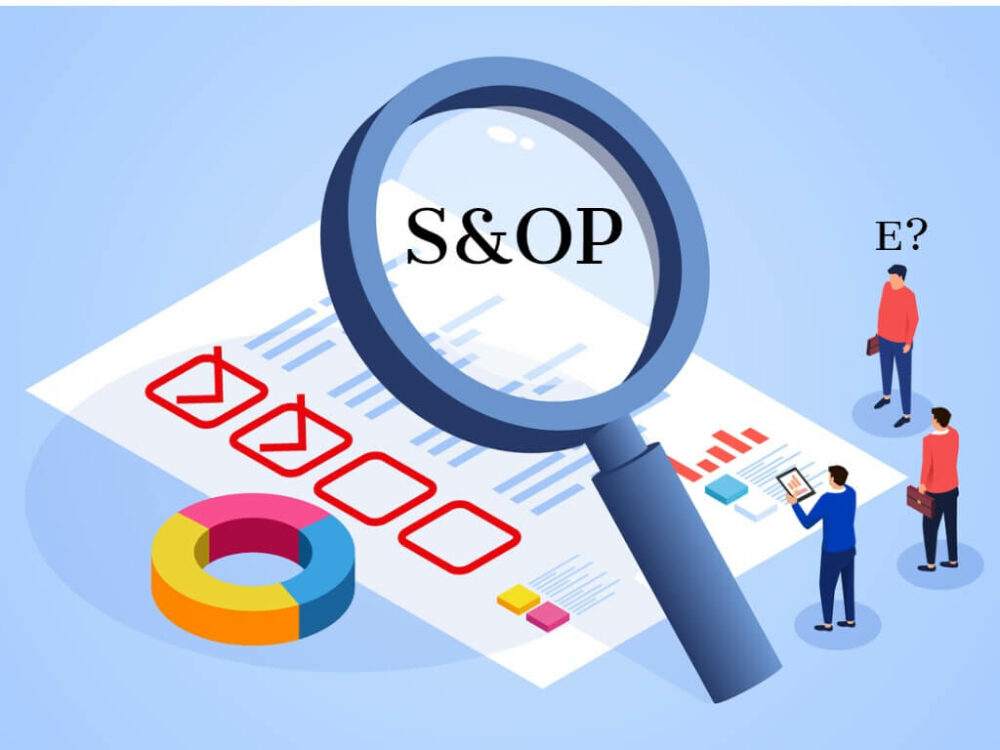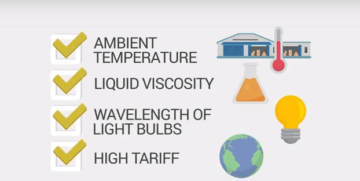
According to Gartner, there can be no effective sales and operations planning (S&OP) process without an S&OE—Sales and Operations Execution, process. In other words, why make a plan if cannot be executed accurately or cannot be translated into execution? Here is what Gartner says:
• The No. 1 challenge among manufacturing companies is connecting sales and operations planning (S&OP) to operational plan/execution.
• Value-adding, effective S&OP process cannot exist without Sales and Operations Execution S&OE, as it provides the planning interface to execution.
There has been a recent surge of interest in S&OP. The attraction is primarily in integrating sale and operation as well as better visibility into potential issues. However, the major problem with most, if not all, S&OP systems is that they are far from accurate especially when it comes to capacity and mix of products as well as order level pegging. The inaccuracy of plans leads to all kinds of chaotic manual adjustments and tweaking just to get it to work. S&OP shows you the direction but cannot take you there! In order to arrive at your destination at the right time and place, you need to be able to execute the plan not just get a high-level idea of which direction to go. There may be traffic jams, there may be road closings, there may be flat tires, and there may be bad weather and bad road conditions. In all such instances, your S&OP plan is inadequate to deal with such inevitable but unpredictable issues and cannot give you any help as to what your best course of action should be. Their best suggestion is “keep simulating and perform What-if” all possible conditions that might occur! This is not a feasible approach!
To be able to perform the execution, you need to have:
1- Accurate plans (not just rate-based planning like spreadsheets)
2- Have a unified data model between plan and execution engines
3- Ability to adjust the plan as needed
Furthermore, execution systems, just like vehicles, can handle all the bumps on the road to make the ride a lot easier. Shock absorbers in your vehicles are precisely a method of execution of plans. In their absence, the ride can be extremely uncomfortable. This is often the case when execution systems are missing and people often end up performing all kinds of expediting and manual changes, trying to absorb the “shocks.” Even more importantly, the main issue is that the financial predictions that they had made regarding the plan at the S&OP level are no longer valid and totally false. For example, the use of more expensive substitute materials or more expensive freight methods, because of late deliveries, can substantially add to the real cost of products. To this end, the S&OE system needs to have the capability to monitor the financials, as such changes are made, on an on-going basis. Costs based on S&OP alone is wishful thinking and have no resemblance to the actual.
Another important point that was made earlier above was having the ability to translate plans into execution. In other words, a seamless transition between planning into execution. A unified data model in plan and execution systems is a requirement for this to happen. Furthermore, the planning engine must have a realistic model of the actual environment so that the plans are produced in an accurate manner. Current methods of capacity planning which are based on bucketed rate-per-period is very inaccurate and insensitive to the mix of products. Even if you had two products A and B, if B takes twice as long as A to make, one cannot plan this unless you know how many B’s and how many A’s are needed. An average of X per day or week is very misleading which is exactly what almost all S&OP systems do. In many cases, such as asset-based industries, the actual models of equipment are a must in order to produce accurate plans. Capacity depends on set-up times, batching, availability of tools to be used on the equipment, processing times and so on.
Lastly, almost all S&OP systems cannot trace orders to the components and supplies that are to be used for every order. Thus, the ability to peg orders, to qualify suppliers, and to find root causes of issues and latenesses are totally impossible for these systems! They can only say what is short and which orders will get what is available. In high tech, pharmaceutical and many other industries, pegging to the right supply, to the right supplier, and to the right processes are requirements. S&OP systems must be able to demonstrate such capabilities or else the actual execution of the orders would be a nightmare.
S&OP and S&OE are two essential processes that go hand in hand and in the absence of one or the other the whole purpose of having the system is defeated.
- SEO Powered Content & PR Distribution. Get Amplified Today.
- Platoblockchain. Web3 Metaverse Intelligence. Knowledge Amplified. Access Here.
- Source: https://www.adexa.com/where-is-the-e-in-sop-sales-and-operations-planning/
- 1
- a
- ability
- Able
- above
- accurate
- accurately
- Action
- All
- alone
- among
- and
- availability
- available
- average
- Bad
- based
- basis
- because
- BEST
- Better
- between
- cannot
- capabilities
- Capacity
- case
- cases
- causes
- challenge
- Changes
- Companies
- components
- conditions
- Connecting
- Cost
- Costs
- course
- Current
- data
- day
- deal
- Deliveries
- demonstrate
- depends
- destination
- direction
- Earlier
- easier
- Effective
- Engine
- Environment
- equipment
- especially
- essential
- Even
- exactly
- example
- execute
- execution
- expensive
- extremely
- feasible
- financial
- financials
- Find
- flat
- from
- Furthermore
- Gartner
- get
- Give
- Go
- handle
- happen
- having
- help
- here
- High
- high-level
- How
- However
- HTTPS
- idea
- important
- impossible
- in
- In other
- inaccurate
- industries
- inevitable
- Integrating
- interest
- Interface
- issue
- issues
- IT
- Know
- Late
- Leads
- Level
- Long
- longer
- Lot
- made
- Main
- major
- make
- manner
- manual
- manufacturing
- many
- materials
- method
- methods
- might
- missing
- model
- models
- Monitor
- more
- most
- Need
- needs
- ONE
- OP
- operation
- operational
- Operations
- order
- orders
- Other
- Peg
- People
- perform
- performing
- Pharmaceutical
- Place
- plan
- planning
- plans
- plato
- Plato Data Intelligence
- PlatoData
- Point
- possible
- potential
- precisely
- Predictions
- primarily
- Problem
- process
- processes
- processing
- produce
- Produced
- Products
- provides
- purpose
- qualify
- real
- realistic
- recent
- regarding
- requirement
- Requirements
- Ride
- road
- root
- sale
- sales
- seamless
- Short
- should
- Shows
- So
- such
- suppliers
- supply
- surge
- system
- Systems
- Take
- takes
- tech
- The
- their
- Thinking
- time
- times
- tires
- to
- tools
- TOTALLY
- trace
- traffic
- transition
- translate
- tweaking
- unpredictable
- use
- Vehicles
- visibility
- Weather
- week
- What
- What is
- which
- will
- without
- words
- Work
- would
- X
- Your
- zephyrnet










